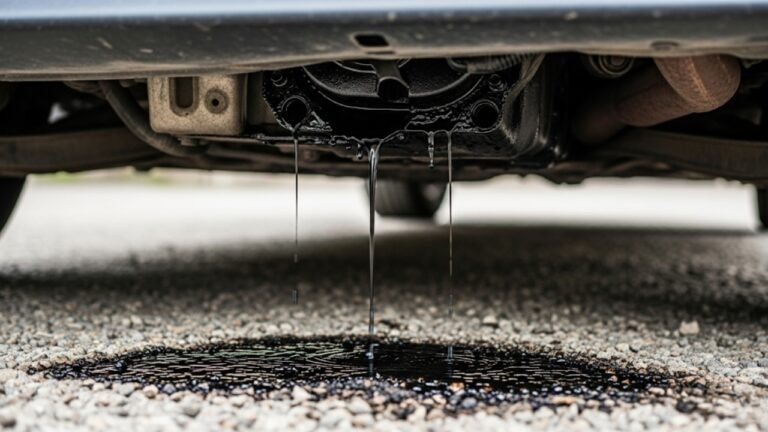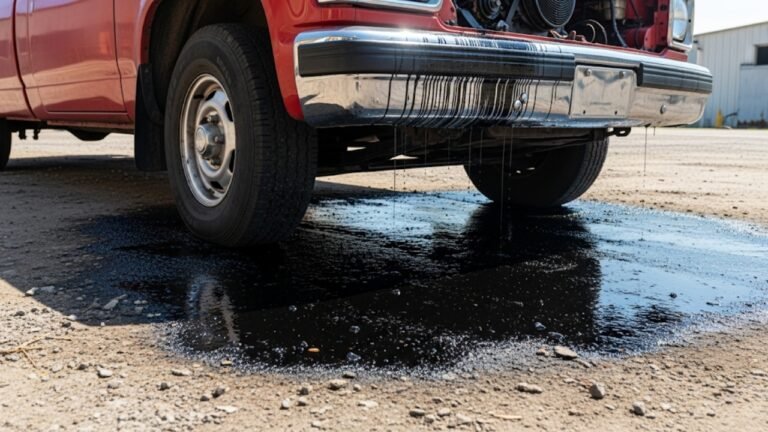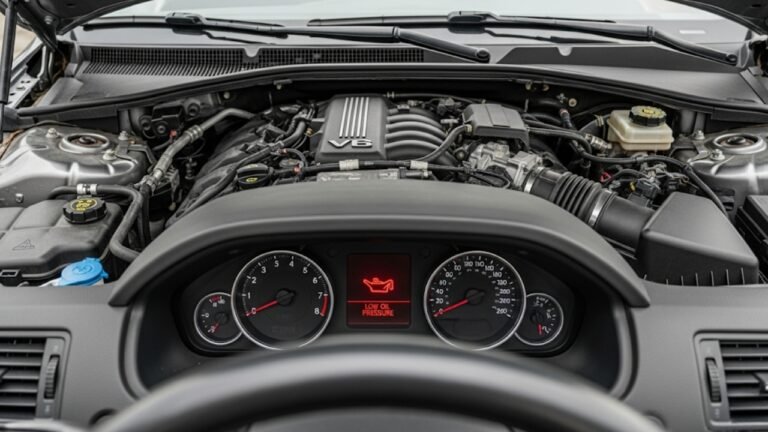What Happens If I Put Too Much Oil in My Car?

We’ve all been there. You’re in your garage or parked in your driveway with the hood popped up. You pull out the dipstick, and it’s a little low. So, you grab a bottle of motor oil, pour some in, and think, “Better to have more than less, right?”
But here’s the kicker—too much engine oil can quietly wreak havoc under the hood.
In this article, we’re going deep into what happens if you put too much oil in your car. I’ll share real-life stories, a few technical breakdowns (don’t worry, I’ll keep it super simple), and clear signs that something’s not right. So whether you’re a new driver or an experienced car owner, by the end, you’ll know exactly what to watch for and how to fix it.
In This Article
- 1 Too Much Oil Sounds Safe… But It Isn’t
- 2 Key Symptoms of Overfilled Oil
- 3 How Overfilling Oil Affects Engine Performance
- 4 What to Do If You’ve Overfilled Your Oil
- 5 Tools You Can Use to Remove Excess Oil
- 6 How Mechanics Test for Oil Overfill
- 7 Long-Term Damage If You Ignore the Problem
- 8 Diesel vs Gas Engines: Does It Make a Difference?
- 9 Prevention Is Cheaper Than a Repair Bill
- 10 Mechanic’s Insight: “We See This All the Time”
- 11 FAQs: What You Should Absolutely Know
- 11.1 1. Can I just let the oil burn off naturally?
- 11.2 2. How much over is too much?
- 11.3 3. What should I do immediately after overfilling?
- 11.4 4. Can overfilled oil cause the engine to seize?
- 11.5 5. How do I know if the mechanic overfilled it?
- 11.6 6. Is it worse than having low oil?
- 11.7 7. Will an oil light come on?
- 11.8 8. Is it safe to drive a short distance with overfilled oil?
- 12 Final Thoughts: Keep It Simple, Keep It Safe
Too Much Oil Sounds Safe… But It Isn’t

Think of your engine like a sponge. It can absorb only so much before it becomes soggy and useless. When you overfill, the oil gets whipped by moving parts like the crankshaft, forming foam. That foam ruins the lubrication properties. Instead of a smooth glide, it’s like rubbing sandpaper between metal parts.
Real Talk: What I Did Once
I remember back in college, I changed my own oil to save money. I didn’t double-check the dipstick after pouring. Took the car for a drive and, within minutes, I smelled something weird—like burning oil. That $5 mistake cost me over $300 in repairs. If only I had known then what I’m sharing with you now!
Key Symptoms of Overfilled Oil
If you’re wondering what happens if you put too much oil in your car, look out for these signs:
-
Blue smoke coming from the exhaust
-
Rough idling or misfiring
-
Oil leaks or burning smell
-
Check Engine Light
-
Strange noises from the engine
-
Decreased fuel efficiency
Overfilled oil doesn’t just sit quietly. It makes your car scream for help in subtle ways. Let me break down each symptom briefly.
Blue Smoke from the Exhaust
This is the biggest red flag. That blueish smoke means oil is being burned in the combustion chamber. Oil shouldn’t be there—it should be lubricating your parts, not getting roasted.
Engine Misfires or Stalling
When oil goes where it shouldn’t, spark plugs get coated. Your car struggles to fire up or may stall randomly. Super frustrating, especially in traffic.
Oil Leaks and Burnt Smells
Excess oil builds pressure inside. The weakest seals give way first, spilling oil onto hot engine parts. What you smell? That’s your engine crying.
How Overfilling Oil Affects Engine Performance
Let’s go deeper. Your engine depends on precise oil pressure. Overfilling it throws off that balance. It’s like over-inflating a balloon—it’s not going to fly better, it’s going to pop.
Here’s a quick breakdown in a table to make it clear:
| Engine Part | Effect of Too Much Oil |
|---|---|
| Crankshaft | Aerates oil, causes foam, reduces lubrication |
| Pistons | Oil can seep into combustion chamber |
| Spark plugs | Foul with oil, lead to misfiring |
| Seals and Gaskets | Can burst or leak due to pressure |
| Catalytic Converter | Gets damaged by burnt oil passing through exhaust |
So basically, too much oil turns lubrication into a threat.
What to Do If You’ve Overfilled Your Oil
Okay, so you checked the dipstick and it’s over the MAX line. Breathe. You’re not doomed. Here’s what to do:
Step-by-Step Guide to Fix It:
-
Turn off the engine immediately – Don’t risk damage.
-
Let the engine cool down – Hot oil can burn you.
-
Check the dipstick – Note how far over the max line it is.
-
Use an oil extractor pump – The easiest way to draw out excess oil through the dipstick tube.
-
Or drain a little from the oil pan – But be careful, it comes out fast.
-
Wipe the dipstick and recheck – Repeat until it’s at a safe level.
Pro Tip: If you’re not comfortable doing this, take it to a mechanic. It’s cheaper to pay for a quick fix than a new engine.
Tools You Can Use to Remove Excess Oil
Here are some items that make the process less of a hassle:
-
Oil extractor pump (manual or electric)
-
Clean rag or paper towels
-
Socket wrench (for oil drain bolt)
-
Drip pan to catch oil
-
Nitrile gloves to avoid a mess
These cost very little and save you major bucks in the long run.
How Mechanics Test for Oil Overfill
Ever wonder what pros do when you walk in and say, “I think I put too much oil in my car”?
They’ll:
-
Inspect the dipstick and oil levels
-
Look for oil around the valve cover gasket
-
Check the spark plugs
-
Use an OBD scanner for engine misfire codes
-
Inspect tailpipe smoke and oil leaks
It’s a routine check, but they know what to look for in seconds. The real problem is when you drive too long before realizing something’s off.
Long-Term Damage If You Ignore the Problem
Driving with too much oil isn’t like running late to a party. It’s more like setting your kitchen on fire and thinking a window will fix the smoke. Ignoring it leads to serious and often irreversible damage.
Here’s what can happen over time:
-
Worn piston rings due to improper combustion
-
Clogged catalytic converter from burnt oil
-
Oxygen sensor failure, affecting fuel-air mix
-
Engine knocking or bearing wear from lack of lubrication
-
Complete engine seizure, which can cost thousands
That’s not an exaggeration. A seized engine often means you’ll need a full replacement or a rebuild. That’s a nightmare—especially when it could have been avoided by draining a little oil.
Diesel vs Gas Engines: Does It Make a Difference?
Yes, it does. While both suffer from too much oil, diesel engines are slightly more tolerant—until they’re not.
Diesel Engines:
-
Can build excessive crankcase pressure
-
More prone to runaway engine syndrome (yup, terrifying)
-
Burn oil faster under load if overfilled
Gasoline Engines:
-
React faster with spark plug fouling
-
Show Check Engine Lights sooner
-
More sensitive to pressure balance and vacuum
So, if you’re driving a diesel, you might not notice the damage as fast—but it’s still happening under the hood. Don’t take silence as safety.
Prevention Is Cheaper Than a Repair Bill
The best way to avoid asking yourself, “What happens if I put too much oil in my car?” is to prevent it entirely. Here’s how:
Quick Prevention Tips:
-
Always check your owner’s manual for oil capacity.
-
Use a funnel to avoid spills and overpouring.
-
Pour slowly and check the dipstick frequently.
-
Don’t rely only on the bottle measurement—it’s not exact.
-
Watch the “MAX” and “MIN” markers carefully.
Think of pouring oil like making tea with sugar. A little goes a long way, but if you dump the whole jar in… well, good luck swallowing that.
Mechanic’s Insight: “We See This All the Time”
I spoke with a local mechanic, Hasan bhai, who’s worked in Dhaka’s Mohakhali area for over 20 years. His words were straight-up honest:
“People come in with their Honda Fit or Toyota Axio, thinking oil is like more rice on the plate—can’t hurt. But cars aren’t biryani. Too much oil chokes them. I once saw an engine blow because the guy thought he was doing his car a favor.”
What struck me most was how common this is. Even people who genuinely care for their car make this mistake. Hasan bhai said at least 1 in 10 cars he sees with engine problems has overfilled oil as a root cause.
FAQs: What You Should Absolutely Know
Let’s wrap up with some common and essential questions about what happens if I put too much oil in my car.
1. Can I just let the oil burn off naturally?
No. It may burn, but the side effects (like fouled plugs, leaks, and smoke) are way worse. You need to remove the extra oil.
2. How much over is too much?
Even half an inch above the MAX line can cause problems. Every car has a different tolerance, but as a rule, don’t overfill past that mark.
3. What should I do immediately after overfilling?
Turn off the engine. Let it cool. Check the dipstick. Then use an extractor or take it to a mechanic.
4. Can overfilled oil cause the engine to seize?
Yes. If it leads to foaming, lack of lubrication, or blocked filters—your engine may seize due to overheating or friction damage.
5. How do I know if the mechanic overfilled it?
Check your dipstick as soon as you leave the shop. If it’s above the safe line, return and ask for a correction.
6. Is it worse than having low oil?
They’re both bad, but too much oil can sometimes destroy an engine faster because the effects sneak up on you.
7. Will an oil light come on?
Not always. Many oil-related problems won’t show a light until it’s too late. That’s why checking manually is crucial.
8. Is it safe to drive a short distance with overfilled oil?
Only if absolutely necessary—and even then, only a few blocks. The longer you drive, the higher the risk.
Final Thoughts: Keep It Simple, Keep It Safe
So, what happens if you put too much oil in your car? A whole lot of things you really don’t want. From blue smoke to broken seals, to a $3000 engine replacement—it all starts with one innocent mistake.
Here’s what I learned over the years (and a few hard lessons):
-
Don’t assume “more is better” when it comes to engine oil.
-
Always check your dipstick during and after an oil change.
-
Keep a cheap extractor pump in your garage.
-
And if your car starts acting weird after an oil top-off? Check that level immediately.
Cars are like our companions. They carry us safely through rain, heat, and traffic. The least we can do is treat them right—with just enough oil, not too much.






